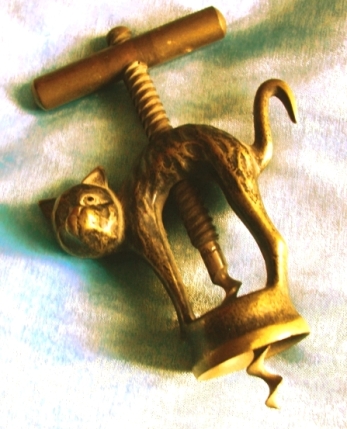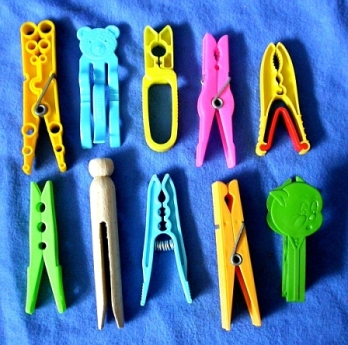In post-Paleolithic times, sculpture to embellish equipment is widespread, as also in architecture, in decoration of boats (polene), royal carriages, and so on.
The anthropomorphic and zoomorphic sculpture is often in the equipment of domestic usage, even if the series production happens through moulds, as already in the ancient Rome with the production of oil lamps.

Imitation of a cat afraid of a threatening dog.
Italy, 1960 to 1970.

The clothespins of the first half of the twentieth century were made of wood and two types: in Southern Europe they were in two pieces joined by a steel spring, while in Northern Europe and North America they were in one piece, with a slit in the center.
In the second half of the twentieth century, the two different traditions continued, but the new technologies of plastic molding produced very beautiful shapes, even anthropomorphic and zoomorphic and in a wide range of colors.
In the photo, type of European laundry pegs produced between 1975 and 2000.
The first wooden spring clips were produced in 1850.
Note the teddy bear and the cat, while the others are geometric.
Pietro Gaietto collection.
Copyright©1999-2020 by Museum of the Origins of Man, all rights reserved.